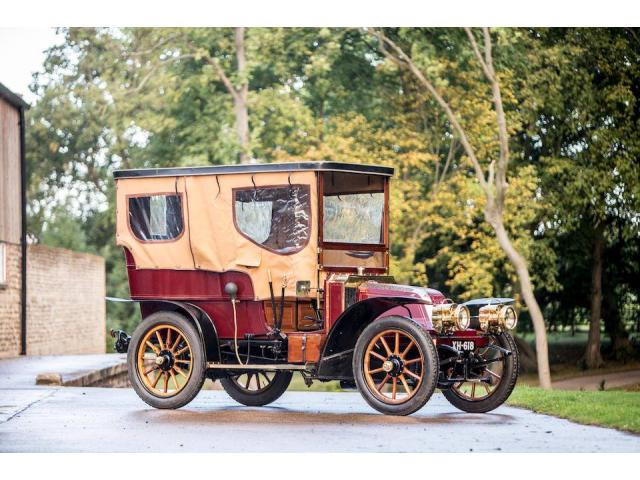1904 Renault Type U Type B 14/20HP
- Brand: Renault
1904 Renault Type U Type B 14/20HP Four-Cylinder Swing-Seat Tonneau
Founded by Louis Renault and his brothers Marcel and Fernand in 1898, the company that would become France's biggest automobile manufacturer started humbly enough, with a solitary 1¾hp De Dion-engined prototype, the sprung rear axle of which would soon be copied by many contemporaries. Production at the Billancourt factory was soon under way on a large scale, demand for its products being enhanced by the performance of Renault cars in the great inter-city races so popular in France at the turn of the 19th Century.
From the outset Renault engineering was of the highest quality, and the arrival of multi-cylinder models really put the company on the map. By 1904 Renault was building its own engines: large-capacity fours at first followed by the AX twin that later developed into the AG, famous for its WWI role as the 'Taxi de la Marne'. In 1908 the firm would introduce its first six-cylinder model, despite Louis Renault's aversion to such complication.
Following Marcel Renault's death in the 1903 Paris-Madrid race, Louis reorganised the company's range of models. One of the new introductions was the Type N, a 14/20hp model powered by a conventional, four-cylinder sidevalve engine of a little over 3.0-litres capacity, which featured the traditional Renault 'coal scuttle' bonnet with rear-mounted radiator. There was magneto ignition, with a coil/battery system as backup - it should be noted the car now runs on coil ignition for performance and reliability. The steel chassis featured semi-elliptic suspension, rack-and-pinion steering, and brakes on the transmission and rear axle only, while power was transmitted via a three-speed gearbox.
Retaining that trademark 'coal scuttle' front end had required considerable ingenuity. Its associated side-mounted radiators limited body design, but rather than adopt a front-mounted radiator like most other manufacturers, which would have meant abandoning his favoured sloping engine cover, Louis chose to move the radiator to the rear of the engine, against the front bulkhead. Although this arrangement enabled a large single radiator to be accommodated, the centre section was obstructed by the engine, necessitating the use of a cooling fan if overheating was to be avoided. Cleverly, Louis used the flywheel as a fan, fitting aluminium blades to its periphery and a metal duct beneath the engine. Renaults would continue to use this form of cooling for the next 20-plus years.
Descriptions & pictures by bonhams
| Specification | |
| Production Start | 1904 |
| Country of origin | France |




































